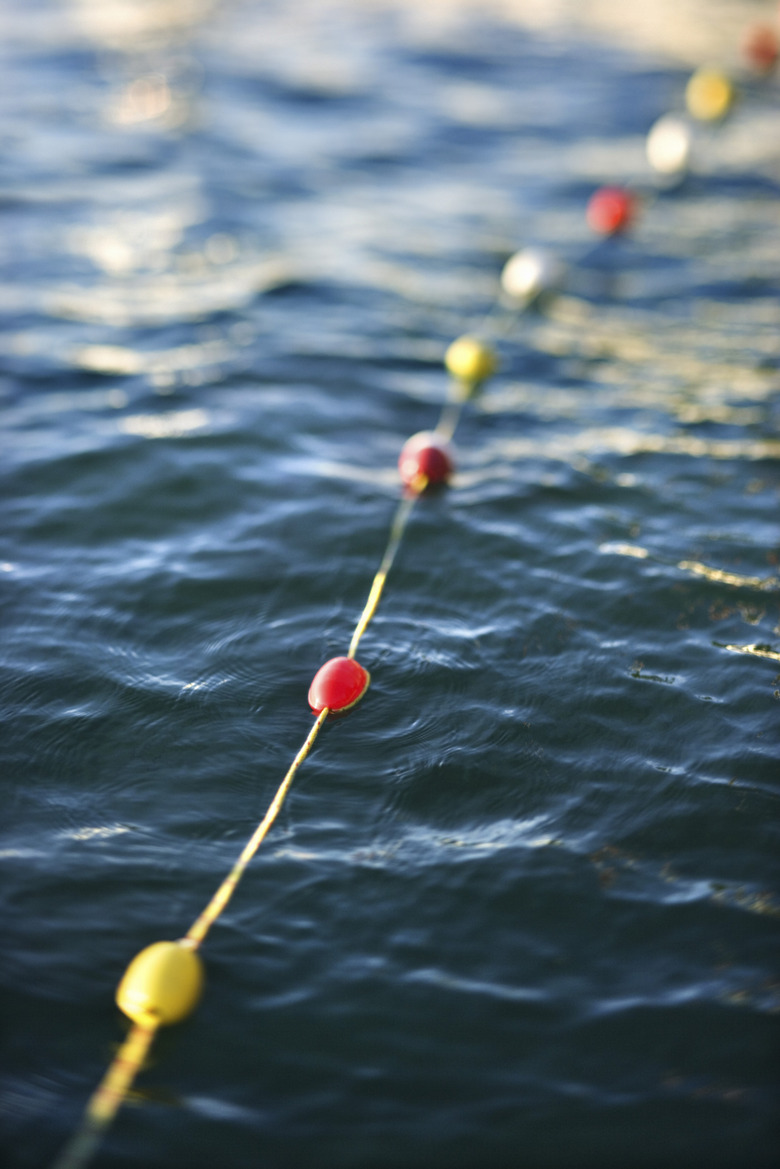How To Calculate Buoy Floatation In The Water
Buoys, balloons and ships are familiar examples of items that float. The phenomenon of flotation, however, is not commonly understood. Flotation was first explained by the classical Greek mathematician, Archimedes, who formulated the famous principle that bears his name. Archimedes' Principle states that an object completely or partially immersed in a fluid (a liquid or gas) is acted upon by an upward, or buoyant, force equal to the weight of the displaced fluid. Buoyant force arises from a difference of density between a fluid and an object immersed in the fluid.
Step 1
Imagine a buoy made of cork floating on water. Assume that the buoy has a volume of 2 cubic feet (ft-cubed) and a density of 15 pounds per ft-cubed. Calculate the weight of the buoy as follows: 2 ft-cubed x 15 pounds / ft-cubed = 30 pounds.
Step 2
Calculate the weight of water that has a volume equal to that of the buoy, using 62.4 pounds / ft-cubed as the density of water, as follows: 2 ft-cubed x 62.4 lbs / ft-cubed = 124.8 pounds / ft-cubed.
Step 3
Note that the buoy, if held under water, displaces 124.8 pounds of water. According to Archimedes' principle, the buoyant force acting on the cork is 124.8 pounds, which is greater than the weight of the cork. Therefore, if the cork is released the buoyant force pushes it to the surface, where it remains partially immersed.
Step 4
Calculate the volume of water displaced by the floating buoy, as follows: 30 pounds of water / [62.4 pounds / ft-cubed] = 0.481 ft-cubed.
Step 5
Calculate the amount of the buoy's volume remaining above the surface of the water, as follows: 2 – 0.481 = 1.519 ft-cubed. The percentage of the buoy's volume above water is therefore: [1.519 / 2] x 100 = 76 percent.
TL;DR (Too Long; Didn't Read)
The density of water is 62.40 pounds / ft-cubed at 26 degrees Fahrenheit, the temperature of cold sea water. The density of water, like that of any fluid, decreases with increasing temperature. For example, the density of water is 62.30 pounds / ft-cubed at 70 degrees Fahrenheit. The most accurate measurements involving density are obtained by using values at specific temperatures.
Cite This Article
MLA
Merry, Michael. "How To Calculate Buoy Floatation In The Water" sciencing.com, https://www.sciencing.com/calculate-buoy-floatation-water-8719163/. 24 April 2017.
APA
Merry, Michael. (2017, April 24). How To Calculate Buoy Floatation In The Water. sciencing.com. Retrieved from https://www.sciencing.com/calculate-buoy-floatation-water-8719163/
Chicago
Merry, Michael. How To Calculate Buoy Floatation In The Water last modified August 30, 2022. https://www.sciencing.com/calculate-buoy-floatation-water-8719163/
